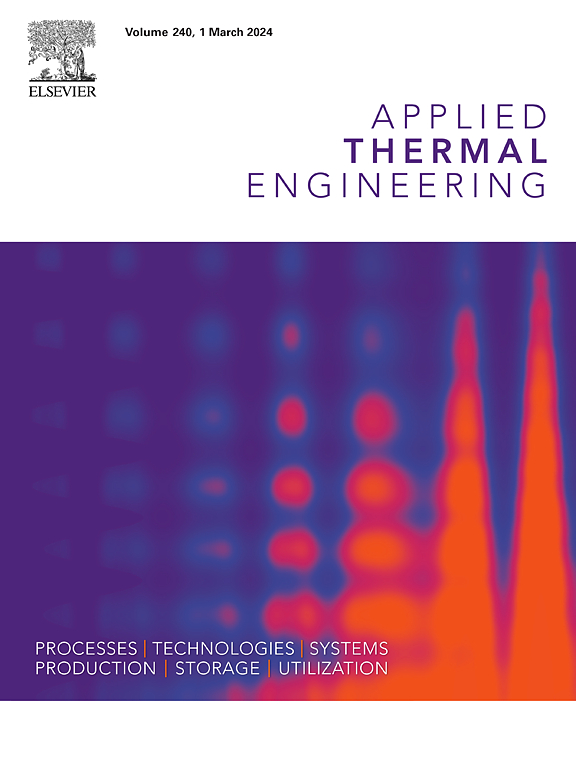Modelling in-furnace phenomena in a hydrogen-rich low-carbon reduction smelting furnace: Influence of blast parameters of hydrogen-rich gas
IF 6.1
2区 工程技术
Q2 ENERGY & FUELS
引用次数: 0
Abstract
CFD study of the reduction smelting furnace (RSF) of a full-oxygen hydrogen-rich low-carbon reduction smelting ironmaking process is presented in this work. The influences of hydrogen-rich gas blast parameters on the in-furnace phenomena are studied. The results indicate that the hydrogen-rich gas predominantly develops at the edge of the reactor, while CO gas tends to dominate the central gas flow. When the temperature of the hydrogen-rich gas is 1223 K and the ratio φ(H2):φ(CO) is 7:3, the molar fraction of Fe at the bottom of the reduction section is 0.882. As the injection temperature of the hydrogen-rich gas increases, the reduction effect inside the furnace gradually improves, leading to an increase in Fe content. However, when the temperature exceeds 1273 K, the rate of increase in metallic iron content slows down. As the ratio of hydrogen-rich gas φ(H2):φ(CO) increases from 6:4 to 9:1, the area of high-temperature zones inside the furnace gradually decreases. The endothermic phenomenon of H2 intensifies, the matching of physical and chemical energy weakens, and the metallization rate gradually decreases. Considering that a higher carbon emission occurs with a φ(H2):φ(CO) of 6:4, a ratio of 7:3 for hydrogen-rich gases is more appropriate from an academic perspective. This study provides a theoretical basis for optimizing the operation of the full-oxygen, hydrogen-rich carbon cycle reduction melting furnace process.
富氢低碳还原冶炼炉炉内现象建模:富氢气体鼓风参数的影响
本文对全氧富氢低碳还原冶炼炼铁工艺的还原炉进行了CFD研究。研究了富氢鼓风参数对炉内现象的影响。结果表明,富氢气体主要发育在反应器边缘,而CO气体则倾向于主导中心气流。富氢气体温度为1223 K, φ(H2):φ(CO)比为7:3时,还原段底部Fe的摩尔分数为0.882。随着富氢气体注入温度的升高,炉内还原效果逐渐改善,导致铁含量增加。然而,当温度超过1273 K时,金属铁含量的增加速度减慢。随着富氢气体φ(H2):φ(CO)的比例由6:4增加到9:1,炉内高温区面积逐渐减小。H2的吸热现象加剧,物理化学能匹配减弱,金属化率逐渐降低。考虑到φ(H2):φ(CO)为6:4时碳排放量较高,从学术角度来看,富氢气体的比例为7:3更为合适。本研究为全氧富氢碳循环还原熔窑工艺的优化操作提供了理论依据。
本文章由计算机程序翻译,如有差异,请以英文原文为准。
求助全文
约1分钟内获得全文
求助全文
来源期刊

Applied Thermal Engineering
工程技术-工程:机械
CiteScore
11.30
自引率
15.60%
发文量
1474
审稿时长
57 days
期刊介绍:
Applied Thermal Engineering disseminates novel research related to the design, development and demonstration of components, devices, equipment, technologies and systems involving thermal processes for the production, storage, utilization and conservation of energy, with a focus on engineering application.
The journal publishes high-quality and high-impact Original Research Articles, Review Articles, Short Communications and Letters to the Editor on cutting-edge innovations in research, and recent advances or issues of interest to the thermal engineering community.
 求助内容:
求助内容: 应助结果提醒方式:
应助结果提醒方式:


